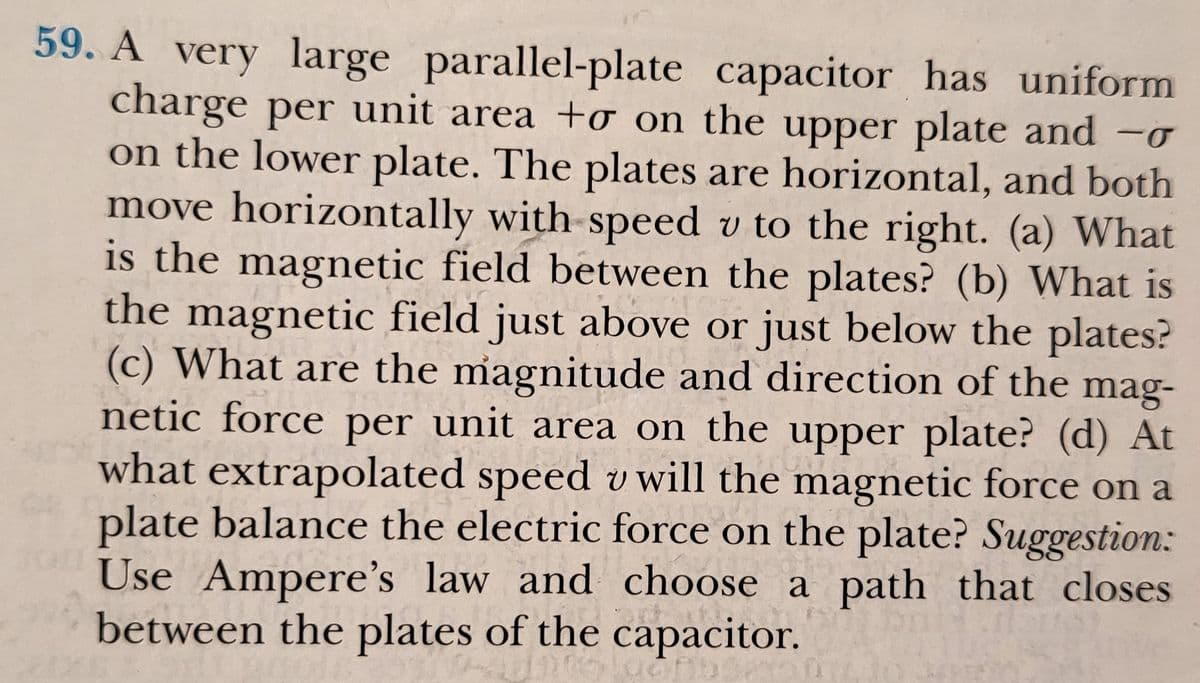59. A very large parallel-plate capacitor has uniform charge per unit area +o on the upper plate and -o on the lower plate. The plates are horizontal, and both move horizontally with speed v to the right. (a) What is the magnetic field between the plates? (b) What is the magnetic field just above or just below the plates? (c) What are the magnitude and direction of the mag- netic force per unit area on the upper plate? (d) At what extrapolated speed v will the magnetic force on a plate balance the electric force on the plate? Suggestion: Use Ampere's law and choose a path that closes between the plates of the capacitor.
59. A very large parallel-plate capacitor has uniform charge per unit area +o on the upper plate and -o on the lower plate. The plates are horizontal, and both move horizontally with speed v to the right. (a) What is the magnetic field between the plates? (b) What is the magnetic field just above or just below the plates? (c) What are the magnitude and direction of the mag- netic force per unit area on the upper plate? (d) At what extrapolated speed v will the magnetic force on a plate balance the electric force on the plate? Suggestion: Use Ampere's law and choose a path that closes between the plates of the capacitor.
Related questions
Question

Transcribed Image Text:59. A very large parallel-plate capacitor has uniform
charge per unit area +o on the upper plate and -o
on the lower plate. The plates are horizontal, and both
move horizontally with-speed v to the right. (a) What
is the magnetic field between the plates? (b) What is
the magnetic field just above or just below the plates?
(c) What are the magnitude and direction of the mag-
netic force per unit area on the upper plate? (d) At
what extrapolated speed v will the magnetic force on a
plate balance the electric force on the plate? Suggestion:
Use Ampere's law and choose a path that closes
between the plates of the capacitor.
Expert Solution
This question has been solved!
Explore an expertly crafted, step-by-step solution for a thorough understanding of key concepts.
Step by step
Solved in 5 steps with 1 images
